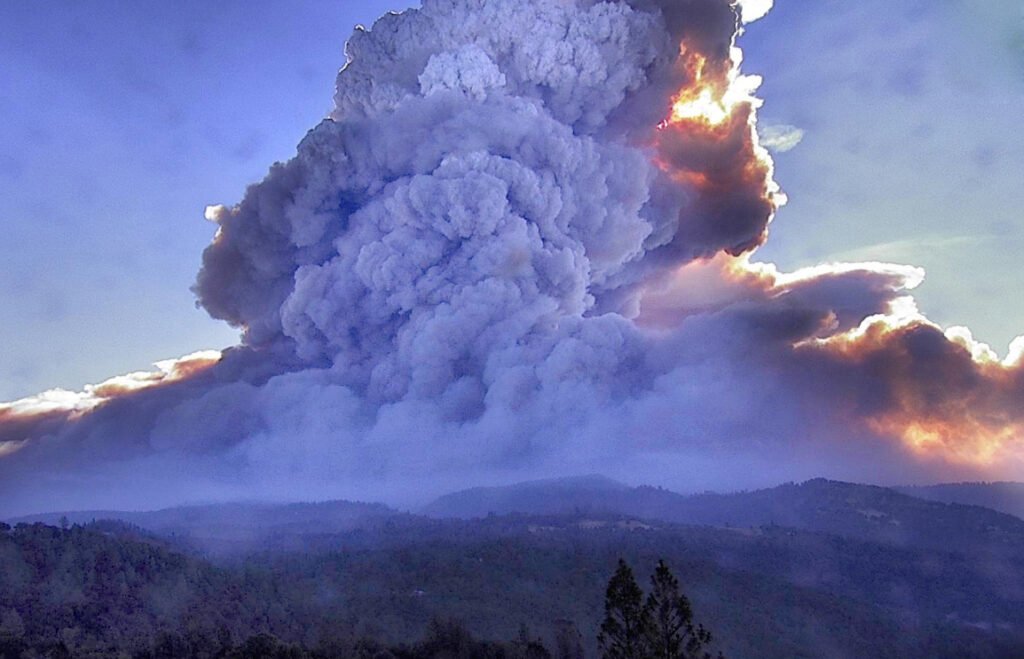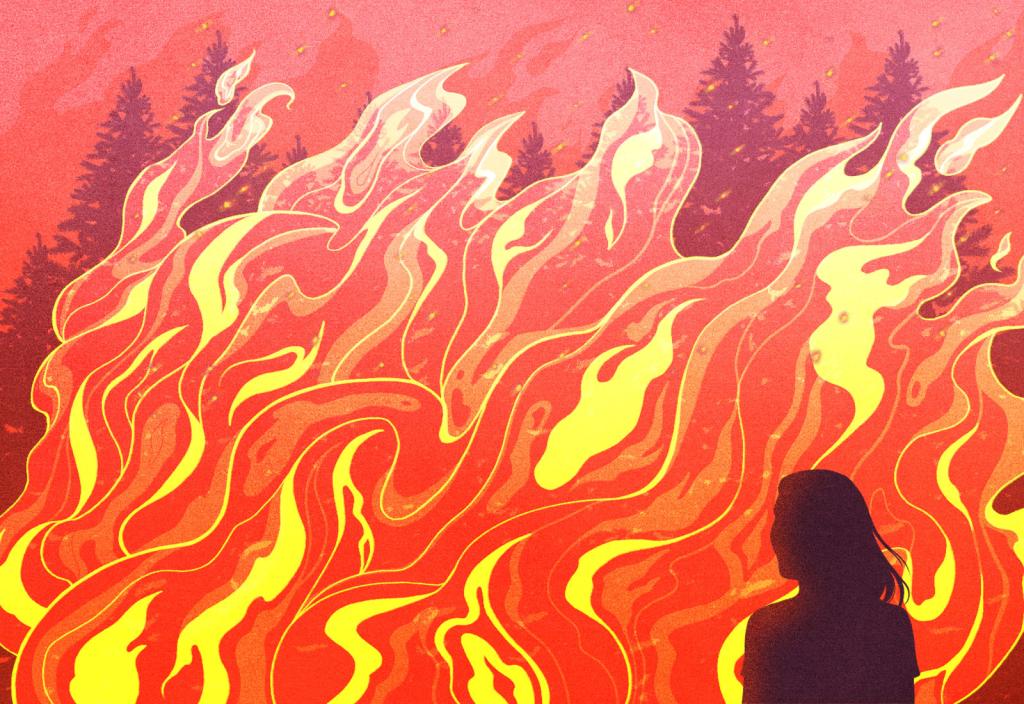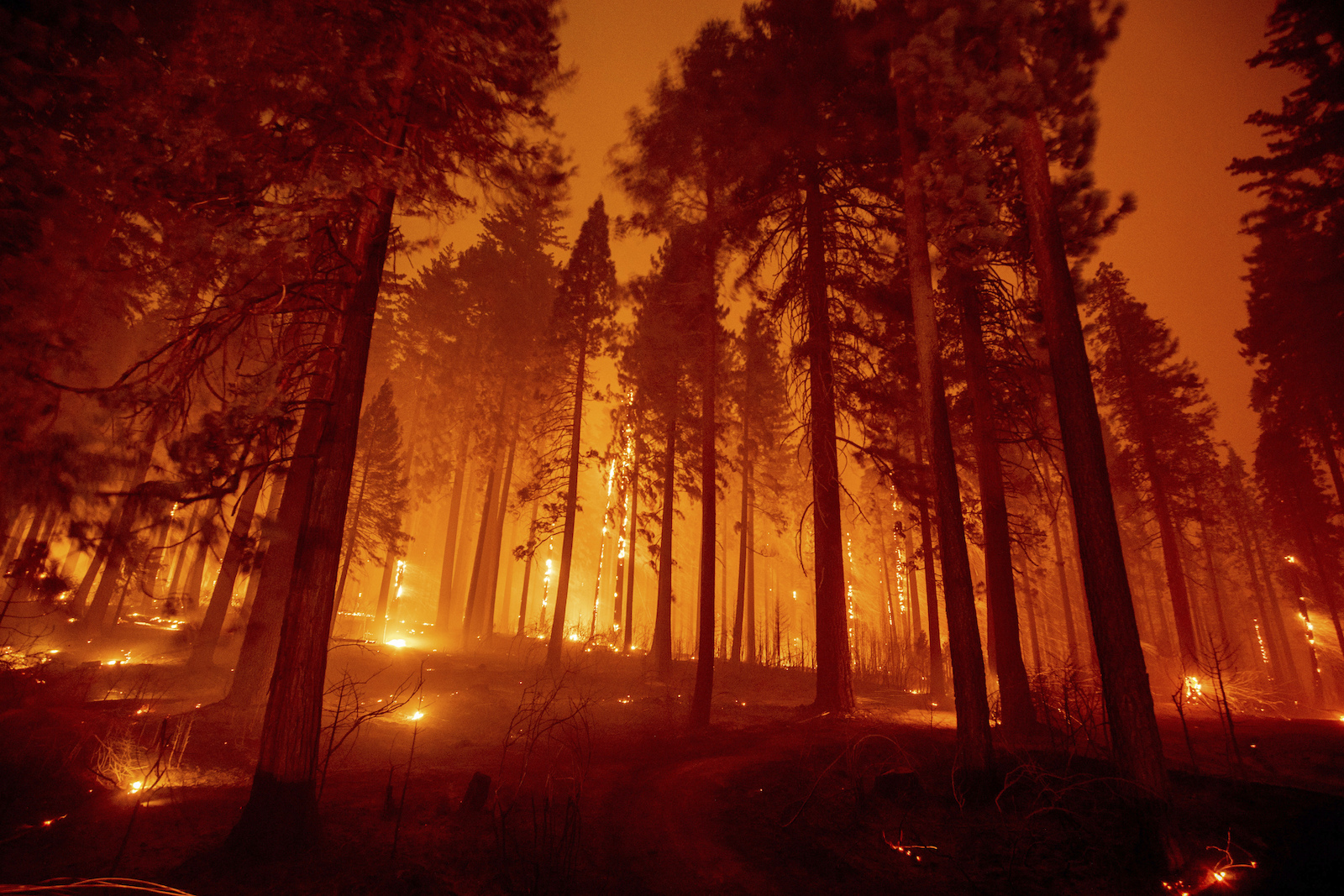As the Dixie Fire grew into the largest single wildfire in California history early this week, scorching over 600,000 acres, a new blaze erupted with an intensity never seen before. In the thick ponderosa and cedar forests east of Sacramento, the Caldor Fire sent flames hundreds of feet into the sky on Tuesday, racing north toward Lake Tahoe with “unprecedented fire behavior and growth,” according to an official national fire incident report from CalFire and the Forest Service.
In a matter of 36 hours, the Caldor Fire jumped from 6,000 acres to 54,000 acres, burning through several isolated communities. The largest, Grizzly Flats, was home to about 1,000 people. There is, so far, no count of the number of structures destroyed, because it is still too hot for inspectors to enter the area, said Lynn Tolmachaff, spokesperson for CalFire, California’s state fire agency. Thousands of residents have been ordered to evacuate the small towns and cabins along Highway 50, located squarely in the fire’s path. Officials expect the blaze to continue advancing north for the time being. It remains out of control without any containment.
Videos and photographs of the Caldor Fire show the flames roiling into a pyrocumulous cloud 30,000-feet high, a phenomenon that generates extreme winds, which increases fire temperature and growth.

Forecasters warn the situation could be about to get even worse: Early Wednesday morning winds began gusting heavily. The U.S. National Weather Service issued a “red flag warning” for winds up to 55 miles per hour, conditions that are intensifying the Caldor, Dixie, and many of the state’s other fires that are currently burning, Tolmachaff said. The electric company PG&E, California’s largest utility, turned off the lights for parts of 13 counties in the state to prevent wind-damaged wires from starting new fires.
As the Caldor Fire surged into California’s Eldorado National Forest on Tuesday, the Forest Service announced it would close access to all 600,000 acres of the public land. That’s an unusual step in most years, but the sixth full forest closure so far in 2021.
“This fire has done things that nobody could have predicted, but that’s how firefighting has been in the state this year,” Jeff Marsolais, Supervisor for the Eldorado National Forest, said at a community meeting Tuesday evening.“I spent four weeks in the [northern part of the California], and every time a fire broke, it outpaced our models two-to-one.”
What’s behind this strange fire behavior? Basically: Climate change.
The CalFire and Forest Service incident report for the fast-moving Caldor Fire points to dry fuels and wind. In California, climate change hasn’t changed the total precipitation over the long-term, but it has increased temperatures, drying out the trees, shrubs, and forest floors, said Leroy Westerling, a University of California, Merced professor who studies the way climate change affects wildfires. “You’ve had warmer temperatures for a long time now, and the variability of precipitation has increased, but the total amount of precipitation hasn’t increased to keep pace with increased evaporation, so you are basically getting drier and drier fuels,” Westerling told Grist.
That means that big fires like this, that generate their own weather and behave in new unpredictable ways, “are going to become more and more common,” he said.
California currently has five active fires over 50,000 acres. With some 10,000 personnel working around the state, “we’re kind of getting to that point where we are seeing a draw on firefighters,” said Tolmachaff of CalFire. “It’s not as bad as last year when we had the lightning siege, but it’s getting there.”
Several more giant wildfires are burning in Oregon and Washington. As Grist’s new newsletter on wildfires put it, “There are 104 fires currently burning in 12 states; just two of those blazes are contained.” It’s still early in the Northwest fire season, which can extend into December. “We’ll just have to see what Mother Nature will do,” Tolmachoff said. The vegetation is expected to only get drier and this strange fire behavior could become old news very fast. Buckle up.



